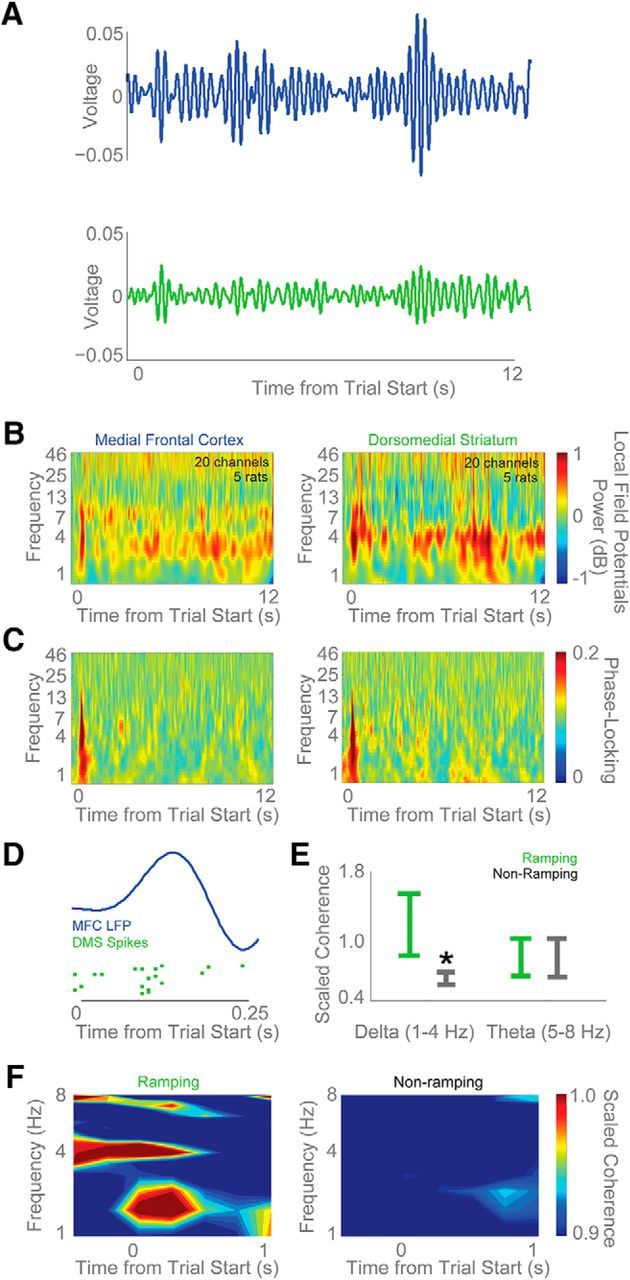Figure 10.

DMS MSNs are functionally coupled with cue-evoked MFC 4-Hz activity. A, Raw field potentials from the MFC (blue) and DMS (green) filtered from 3 to 6 Hz revealed marked modulations after the stimulus and before response preparation. Average LFP activity from one animal with simultaneous MFC and DMS recordings is shown. B, Time-frequency analyses reveal strong ∼4-Hz cue-triggered power in both MFC and DMS neurons. Red, Increased power; blue, decreased power. C, Intertrial coherence is observed in both MFC and DMS neurons at low frequencies. Red, strong phase-locking across trials; blue, weak phase-locking across trials. D, To test this idea, we examined DMS MSN spiking activity in relation to MFC LFPs, and found instances of DMS neuronal firing that was coupled to ∼4-Hz rhythms. E, On average, ramping MSNs had more spike-field coherence in delta bands (1–4 Hz) than nonramping neurons. Coherence is normalized to each neuron's 95% confidence interval to facilitate comparisons across neurons. Red, significant coherence. F, This coupling was apparent for ramping (left) but not for nonramping (right) MSNs in the delta but not theta range. Data from 42 DMS MSNs in five animals with simultaneous MFC LFP recordings. All data are mean ± SEM; *p < 0.05.
